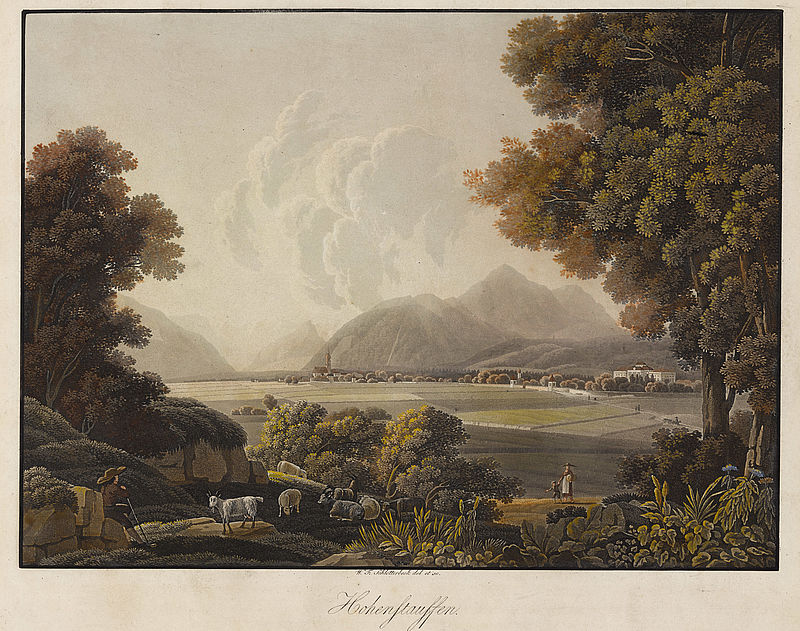Hohenstaufen and Klessheim Palace
Wilhelm Friedrich Schlotterbeck (1777 - 1819)
Framesize 50.00 x 65.00 x 3.50 cm
Schlotterbeck’s trip in 1803 through Salzburg and other Austrian landscapes was the basis for numerous aquatint etchings which motivated Ferdinand Olivier (1785–1841) to visit Salzburg in 1815 and 1817, and which contributed to shaping the lasting romantic image of Salzburg.
Schlotterbeck’s print "Hohenstauffen and Klessheim Palace" is largely influenced by the ideal landscape painting of the end of the 18th century. Although this involved the direct study of nature, the execution took aesthetic demands into account. It seems like an Arcadian landscape, with herds and herdsmen in the foreground. The view takes in meadows, fields, Klessheim Palace and the parish church of Siezenheim, travelling over the wooded Höglberg on to the Hoher Staufen. Around 1800, such views became extremely popular, reflecting the increase in travel activity.
HABERSATTER Thomas mit zwei Beiträgen von/with two texts by Helga Buchschartner (HB): Salzburg Umgebung/Salzburg’s surroundings, in: DUCKE Astrid, HABERSATTER Thomas (Hrsg./Edited): Stadt ∙ Land ∙ Berg. Salzburg und seine Umgebung. Town ∙ Landscape ∙ Mountain. Salzburg and surroundings. Residenzgalerie Salzburg. Salzburg 2022, S./p. 96–97


